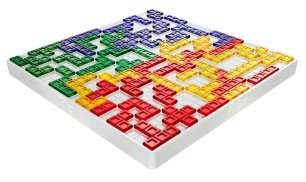Continued from here: Constellations Part 1: The Creation
After my first iteration didn’t quite do it, I had to hit the drawing board. Dante had the idea to make little constellation cutouts that could fit on a board, a la Blokus. The constellations would fill in the board, and make a pretty sky.

That ended up not being feasible, as the cost of production would be quite high, and we are looking for a sub-$20 price point.
We then thought about the old peg boards and rubber bands. The ones that were used in elementary schools to learn about shapes. (At least I did!) We could have the lines that make up the constellations be the rubber bands, and you’d be able to see the shapes clearly!

Then I did the math. To have enough rubber bands to connect every dot in around 18 constellations, we’d need over 200 rubber bands plus the peg board, again, creating an issue with production. The game also wouldn’t last as long because rubber bands decay pretty quickly. Before we came to that conclusion, however, we had already begun work on creating the mechanics behind the pegboard idea. Later, after a suggestion from one of my work colleagues, we decided a white board with dry-erase markers would work much better!
The issue with version 1 of the game was in the “close counts” rule. So, we had to make it very clear to the player that they could build the constellation in only a certain way. Dante also came up with the idea of using the spectral classes of stars (more on that later) as cards to build the constellations, using a mechanic similar to that of Ticket to Ride. A big difference was that we added cards that would count as multiple cards. In this first iteration of the star card deck, we had cards worth 1, 2, and 3 stars.

Put that all together with the white board, and we had a pretty succinct constellation card. Dante made layouts for each constellation as shown below. I swear he was a machine. He churned out around 30 constellations in a weekend or so.


To play a constellation, you would play the star cards shown on the left side of the card, and then add rubber bands to the board in the shape of the constellation. (The ability at the bottom was for advanced play.)
This was great! It looked so promising. There was no doubt as to how the constellation was formed anymore. I even included rules for the ecliptic (Zodiac) constellations so they would have a place to go. Science was being added, and that was our goal! We knew that there would be no question as to how to build each starry picture. Or so we thought.
I created a paper version (I didn’t want to permanently mark up a dry-erase white board to prototype) that could be drawn on with differently colored markers. I brought it to work to play with some coworkers. After a lunch-break worth of play, I present to you the final board:

The game, similar to the drawings on the final board, was a mess.
This idea, while interesting, had a gaping flaw. Before I share that, allow me to share two facts about constellations:
1: Constellations never overlap in the night sky.
2: Constellations come in many different shapes and sizes.
Put those two together, and players have incredible difficulty “seeing” where a constellation will fit. My colleagues spent much of the time rotating their cards, counting pegs, and tracing paths with their fingers. No one was sure if the cards in their hands would work!
Then, more questions arose. Once you start drawing the constellation on the board, what happens if you misjudge the size? Do you keep drawing? What if you discover a constellation was misdrawn? More than anything, drawing the constellations onto the board took more time than actually playing the game.
The good news was that the mechanic of drawing stars to play the constellations was quite fun. Grabbing a 2-star card felt really good, especially if the next player really wanted it. Unfortunately, the other issues with the game overshadowed that fact by quite a bit.
Overall, after playing this version, it was clear we need to …
… Go back to the drawing board. Buh-dum-tish.
Part 3 is here: Constellations Part 3: Eureka!
[…] Part 2: Drawing Board […]
LikeLike
Reblogged this on dslauretta and commented:
The design of our new Constellations game followed a tortuous path.
LikeLike
[…] Continued from Constellations Part 2: Drawing Board. […]
LikeLike